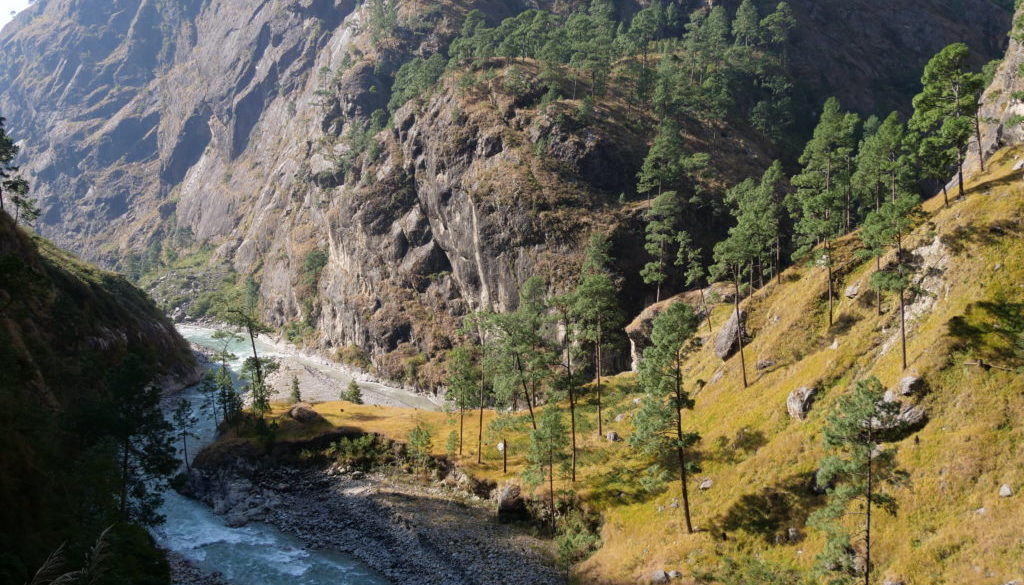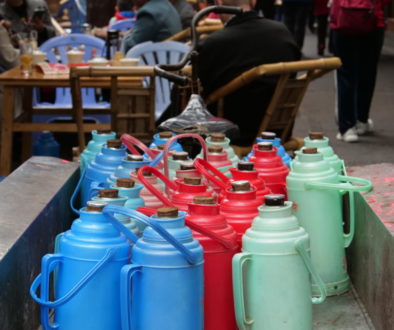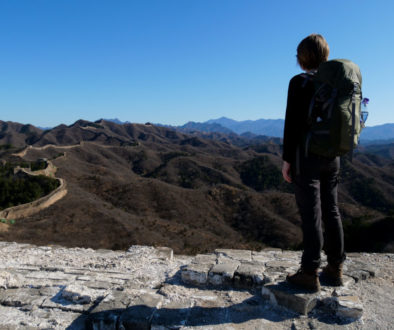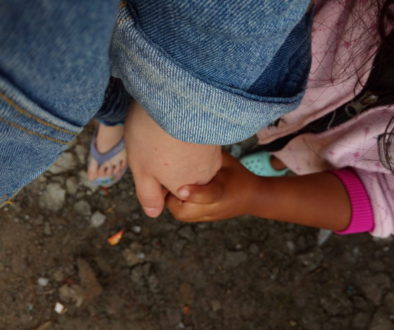Nepal, a wonderful country, with the loveliest people and the beautiful Himalaya mountains. There’s many reasons to visit this country, but the most popular one is definitely to trek. There are so many beautiful treks to choose from and I honestly think that you can’t go wrong since the Himalayas are so beautiful. By now I did three trekkings in Nepal and these are the things I wish I had known in the beginning. I hope they help you prepare for you trekking!
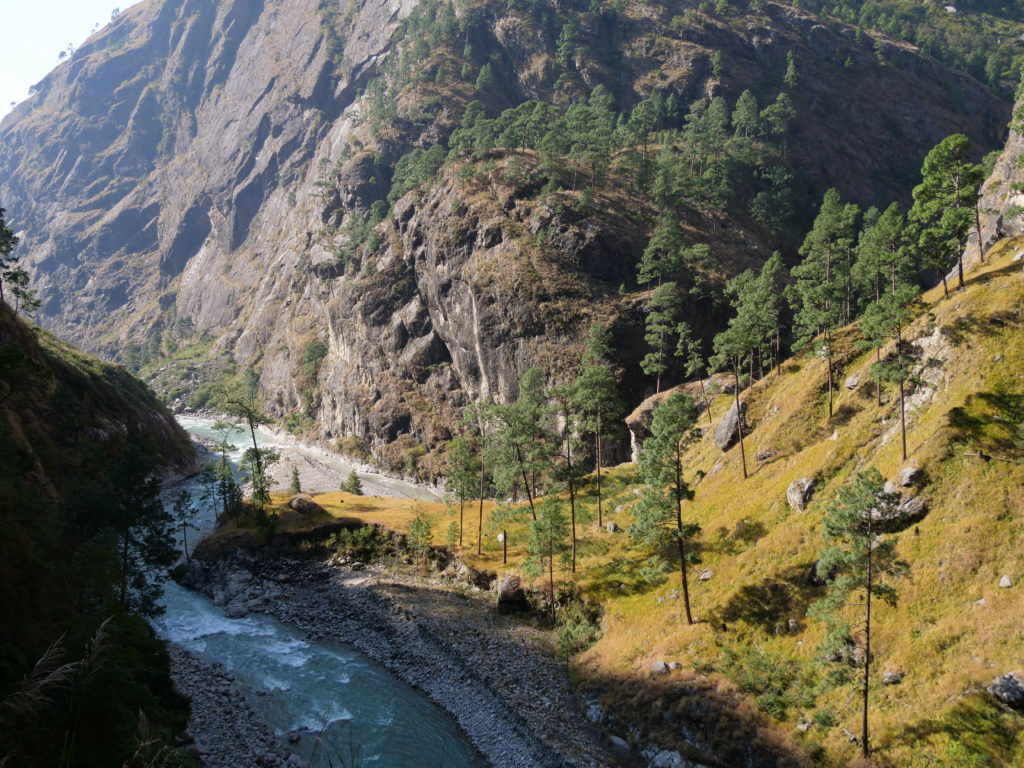
Practical tips & tricks for a trekking in Nepal:
After doing the Helambu trekking, the ABC trek (Annapurna Base Camp) and part of the Manaslu trek, I’d love to share some tips & tricks with you for a trekking in Nepal! This is all based on my personal experience and you should definitely do your own thing, but I hope some of these will help you out and make your trekking more comfortable! I definitely would have loved to know some of these on my first trek!
TO TAKE WITH YOU:
(except for the obvious basics)
- Thermal underwear (you want extra layers when you go higher, also for your legs and this is the perfect base). You might think it’s stupid that I don’t consider this a basic, but lots of people forget extra layers for the legs. AND thermal underwear is the best when you’re sweaty, so that if you’re higher up, you won’t freeze the moment you stop moving. That being said, I love merino wool – so I always bring a merino wool top to keep warm. The best thing about this fabric is that it keeps you warm, even when ‘wet’.
- Most companies rent out down jackets and I would definitely recommend getting one. These jackets are made for cold weather and if you do not own one (like me) then you should rent it, because they are very expensive to buy. (Companies often also rent sleeping bags, if you don’t happen to have this).
- A hanger for clothes. This might sound stupid, but on my first trek, I really missed this! The accomodations on the trek are very basic and this is so handy if you want to take a shower (often not many hooks to hang your stuff on). But also, trekking gets you sweaty, so in the evening, I often hang my fleece up so it could dry more easily. I took one you can fold so it’s really small (and light). I used these.
- A water bottle with filter and water filter tablets! Two reasons to do this: it’s more ecological and it saves you money, since water can get expensive high up in the mountains (everything you buy has to be carried all the way up). Best way to do this: you use a plastic bottle of water that you can fill up and add a tablet to. If the tablet has done it’s work, you transfer it to your water filter bottle, so it can filter out the nasty taste of the tablets! And repeat!
- A powerbank. Electricity gets scarcer the more you ascend, so extra power is a luxury! Especially if you are like me and have camera gear with you.
- An adapter with USB portals. Same reason as the above, electricty is limited, so in some places you get only one plug (if there is a spot) in the common room where everyone wants to charge their things. If you have usb portals, you can charge more of your things.
- A sleeve for you sleeping bag. An inner sleeve for you sleeping bag does not only creates more warmth, but is also more hygienic. Sleeping in your underwear is best to keep warm (even though you will not want this in the cold rooms haha, but once you are settled in your bag, you are good!) so it’s nice to have a sleeve that you can wash after the trek!
- Medicine kit. What you definitely cannot miss: Diamox (against altitude sickness), paracetamol (headaches, also related to the altitude), medicine against diarrhea and nausea and something against blisters. These are the basic must-needs. Feel free to expand what you take with you! I also take something with me for a cold (to unblock your nose) and it’s not really a medicine, but I cannot miss foot powder – lovely for the feet!
- A heat pack. This is purely a luxurious item, since it is not necessary, but on the highest points, I was very happy to have something to keep my hands warm, especially when you are waiting to see the sunrise.
- A headlight. You never known when there’s a blackout or simply when there is not a lot of light around. You might not need it, but it’s barely extra weight and you never know when you might need it. I use one of the brand Petzl, with a rechargable battery (ecofriendlier), but what works, works!
- Baby wipes! I wouldn’t want to do a trek without them! Once you reach a certain point (depending on how high you trek and in which season), it will be too cold to shower (it’s in an unheated cabin outside) and then those wipes are the best way to freshen up! I love this, so I can keep to feel fresh to a certain degree. Also nice to wipe away the dried sweat because that can often make you feel cold.
- And last but not least: toilet paper! There won’t be toilet paper in most lodges, so bring your own. You can buy it on the trek (but not everywhere) but that gets expensive quickly and it’s often bad quality toilet paper that is used up immediately. So, bring your own, you’ll be happy that you have it!
- Bring an ecofriendly shampoo with you (and ecofriendly toothpaste) – all water comes and goes back to the mountains, so make sure you keep it ‘clean’. I use the shampoo bar from Lush.
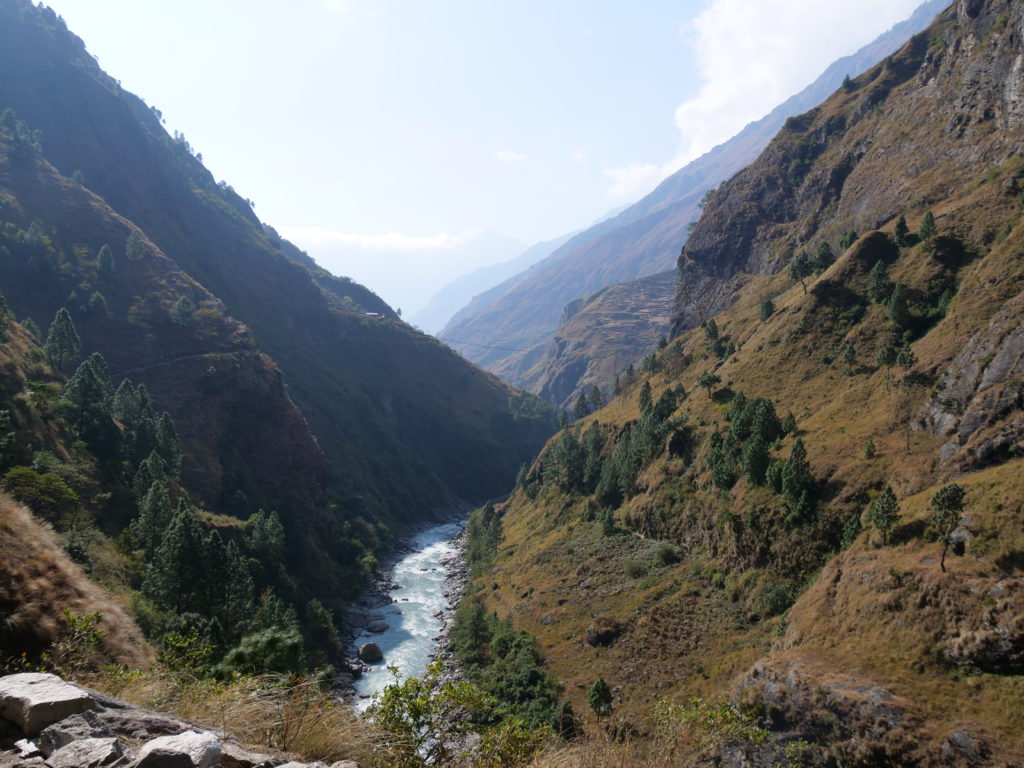
PRACTICAL ADVICE:
- Ask your trek company how much money they advise you to take with you on the trek. Most companies have all meals included, but you’ll want to buy a snack from time to time (extra energy!) and you pay for your own drinks. As said, you can save a lot if you do not buy bottled water – but never drink it without filtering!
- No must, but I would advise to take probiotics before your trek. Food isn’t always the best in the mountains and because of different bacteria we are more sensitive to sickness! I took probiotics to be weaponed better (except for the last time and then I happened to get sick) and it is also never a bad idea for your stomach anyway!
- Don’t eat meat. Your guide will probably tell you this, but once you start the trek, you should not eat meat anymore as to avoid food poisoning. Electricity can’t be trusted in the mountains (you’ll probably have at least once the experience of a shortage) and therefore the meat can’t be trusted. But, the local dalbat is mostly eaten without meat, so it’s easy to choose meatless dishes!
- Just to give you an extra insight: you’ll more likely be cold once you arrive at the lodges than during the walk. There is no heating and the buildings are simply brics or made from woods and have single glass windows. Best advice is to freshen up and put on dry clothes. Most of the time, you go to bed after dinner, since you rise up early and it’s too cold to stay out of your sleeping bag.
- Say goodbye to luxury and know that showers are sparse. Once too high (and cold), it’s best to not shower anymore (when in doubt, ask your guide) and also, you’ll have to pay. The water is heated with gas and when you know that those gas canisters have to be carried up the same way you came, you know why you have to pay.
- Also something you’ll have to pay for: wifi. Honestly, see it as a detox! Just enjoy where you are at (one of the most beautiful places on earth). At certain spots, there won’t even be any wifi, so simply let your family and friends know that you won’t be able to contact them on your trek.
- Keep your batteries in your sleeping bag. The colder, the easier they lose power, so keep them warmer to avoid this! It’s a real bummer when your battery dies out when you want to take pictures of the beauty around you – especially with limited charing options. I also kept my T-shirt and pants in my clothing bag once it got really cold, simply to make it more comfortable to get dressed when I get up!
- Keep your pack light. As you’ll see, most trekking companies include porters in the trek – it’s most of the time not optional (even though you can always ask, or just choose to look for a guide). I honestly think it’s very important to be respectful of the porters and not make your pack too heavy. Most companies allow your bag for the porter to be 10kg, but I honestly think that is too much. They carry the weight for two persons, so that comes to 20kg. The porters I met are always very strong and they would carry this (and I have seen them carrying this) without complaint, but I don’t feel good about this. I am used to walking and treks, so I put some weight in my own pack (all the drinking water – obviously, my camera, windjack/raincoat, gloves, hat, notebook, ereader, energy bars, toilet paper), but I make sure my ‘big’ bag is not too heavy. Honestly, that’s easy to do – you don’t need new clothes everyday – know that you will smell a bit, but everyone does. And that’s your biggest weight, the clothing. You wear your shoes, so all other things you need are your clothing, sleeping bag and toiletry. I simply don’t know what others take with them that they can get to 10kg! I know that the porters apreciated the fact that I didn’t take too much weight.
So that’s my advise for a trekking in Nepal! But the simplest advice of all: enjoy yourself! I honestly looooved the treks and I hope to do one again. This is such a wonderful experience and I would recommend a trekking in Nepal to anyone who asks.
If you have any more questions, just ask me! And I’d love to know if you used some of my tips and tricks!
Thank you,
Lots of love,
Elise
